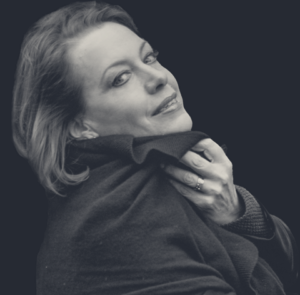These days, when James Levine is mostly in the news due to his back ailments, it is somewhat shocking to see this performance of Le nozze di Figaro begin with the Maestro fairly dancing around on the podium as he conducts a sparkling rendition of the overture. It starts off a classic performance of Mozart’s masterpiece that is almost always excellent.
Although I have always preferred Levine in 20th century works, he is in fine form. Levine keeps the flow of the opera moving briskly along without feeling rushed, which is the key challenge in Figaro, but the performance is not without its rough edges. Uncharacteristically there are occasions where the orchestra threatens to run away on him. The end of the act two finale, for example feels dangerous close to the brink as the string section rushes ahead, but Levine is able to wrestle them back into control. But these moments are few and far between, and in general Levine does an admirable job.
The production, new in 1985, is by the late, great Jean-Pierre Ponnelle. A marvelously specific director, he really understood 18th-century operas and when he had a great cast of singer-actors at his disposal, as he did here, the stage was electric. Every detail is in place, every line given definite meaning, every relationship examined. How often does one see Figaro and Susanna in such an easy, loving partnership, or the red-hot attraction between Cherubino and the Countess? Right down to the smallest roles, the cast functions like a well-oiled machine under Ponnelle’s deft hand.
That cast is an excellent one and features two performances that could, and should, be called definitive. The first is, of course, Frederica von Stade’s Cherubino. Many say she was the definitive Cherubino of the 20th Century, and this video proves their point. She is so unwaveringly right in the part. Every nuance she brings to the role, both musically and dramatically, is spot-on. There’s really not much more to be said; this is the Cherubino of a lifetime.
httpv://www.youtube.com/watch?v=wOTJOlPEuHI
[From a previous release of this performance.]
The other standout is Thomas Allen’s Count. Truly one of the great Mozart baritones, and quite possibly the greatest, Allen delivers a stunningly strong Almaviva. Impeccably sung and simmering with the same energy that served him so well as Don Giovanni, Allen is an extremely dangerous, intelligent Count who is far from easy to resist or outwit. When his passion boils over in an intense “Hai gia vinta la causa”, it is the high point of a phenomenal portrayal.
The fact that these two titan performances do not unbalance the ensemble nature of Figaro is mainly due to the strength of the other principles. The Countess of Carol Vaness is also exceptional, beginning the second act with a stunning “Porgi amor” that is a fabulous indicator for her performance as a whole. In a nice touch, her Rosina grows stronger and more assertive as the evening progresses, and she shows an unexpected flair for comedy in her all-too-innocent posing after Cherubino is rapidly hidden in the closet.
Ruggero Raimondi, sporting a vintage moustache that makes him look disturbingly like Ron Jeremy, is an angrier, more emotional Figaro than the norm. He starts off in somewhat coarse voice (“Sei voi ballare” is quite rough) but by the time “Aprite un po’ quegli ‘occhi” rolls around, he is able to launch a blistering attack on the fairer sense in a magnificent rendition of the aria. Kathleen Battle’s Susanna is the weakest of the five principles, but only by a hair. She is a polarizing performer, and I find her stage persona excessively syrupy, especially in contrast with her well-known backstage antics. She sings the role very well, concluding in a lovely, hushed “Deh vieni non tardar”, but she is a little too sugary for the witty Susanna.
The supporting cast is admirably filled out. Arthur Korn and Jocelyne Taillon are extremely stylish as Figaro’s parents, and the expert presence of Michel Sénéchal as Basilio is very welcome. The reliable presences of James Courtney and Anthony Laciura are more than welcome as Antonio and Curzio. Dawn Upshaw, who was only about twenty-five at the time of the performance, makes much out of little in Barbarina’s aria; the makings of a major Mozartean are clearly evident. In this performance, it is Upshaw and Von Stade who sing the duet for the two village girls during the act three wedding sequence. It’s probably never been better sung.
The performance’s only major downside is the set design, also by Ponnelle. However persuasive he might be as a director, he leaves something to be desired as a designer. It is an unenviable task to stage such an intimate opera as Figaro on the Met’s giant stage, but Ponelle’s spacious rooms are too large and too gloomy for the lightness in the music. His tonal pallette ranges from beige to grey, and as a result this most colorful of operas has quite a bit of color bleached from it.
The costumes (also Ponnelle) are better, barring a few really ugly wigs, but the lighting seems off, with the singers often in shadow. Perhaps they did not adjust them for the cameras, but in any case it’s a rare stumble for resident lighting designer Gil Wechsler. But in this case, where the dramatic and musical elements are so strong, the set and lighting are just the wrapping paper. And even the ugliest wrapping paper can’t spoil such a gift as this exceptional performance. Its DVD release (in James Levine: Celebrating 40 Years at the Met – DVD Box Set) is long overdue.







Comments